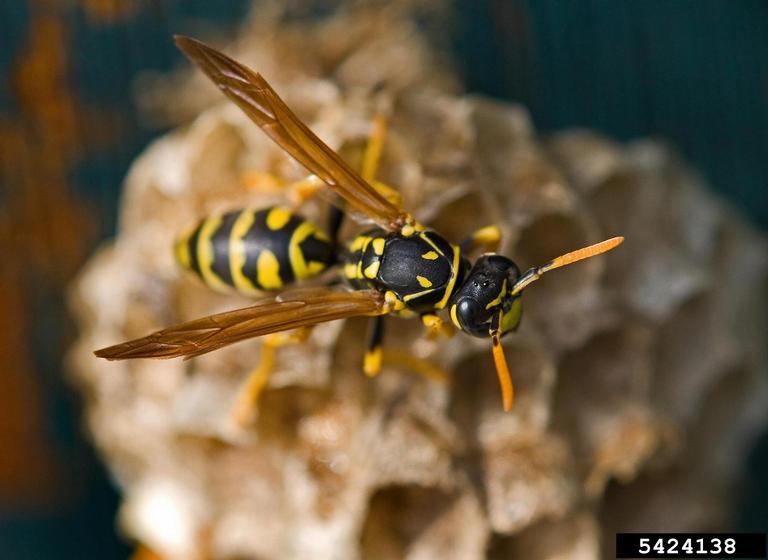By Whitney Boozer
University of Georgia
 The wheel bug (Arilus cristatus) is a very unusual looking insect. The largest of the assassin bugs, mature adults are about an inch in length and have wheel-like humps on their backs.
Though this insect might look scary, the wheel bug is actually a beneficial insect. Both as an immature and as an adult, it is a valuable ally in the control of other insect pests.
As nymphs, wheel bugs hunt and feed on the larvae of other insects, mainly caterpillars, most of which are dreaded in home gardens. As they molt into adults, wheel bugs become larger and can begin feeding on larger insects.
The wheel bug (Arilus cristatus) is a very unusual looking insect. The largest of the assassin bugs, mature adults are about an inch in length and have wheel-like humps on their backs.
Though this insect might look scary, the wheel bug is actually a beneficial insect. Both as an immature and as an adult, it is a valuable ally in the control of other insect pests.
As nymphs, wheel bugs hunt and feed on the larvae of other insects, mainly caterpillars, most of which are dreaded in home gardens. As they molt into adults, wheel bugs become larger and can begin feeding on larger insects.
Insect monsters
Both adults and nymphs of the wheel bug are considered monsters of the insect world. With their deadly beaks and bizarre appearance, they are dreaded foes of other insects. They spear their unfortunate prey with their sharp beak and feed on the unlucky victim’s body fluids. While wheel bugs may be beneficial in home gardens, it’s not wise to handle them. They can inflict a painful bite with their beak. The bite of a wheel bug is said to be more severe than a bee sting. However, they are not aggressive insects and, when left alone, will not cause any problems.Life cycle
With its piercing-sucking mouthparts and half-membranous wings, the wheel bug looks very much like other insects in the order Hemiptera. Adults have one very distinctive character that makes them stand out: It has a wheel-like hump on its back. The wheel bug’s life cycle consists of an egg, nymph and adult. The adults mate in the fall, and the males stay around and guard the females from other males. The female then lays her eggs in a hexagonal cluster, which resembles a honeycomb, on trees, shrubs or other structures. A female can lay from 42 to 182 eggs at a time, and they are usually laid within four feet of the ground. The eggs are the overwintering stage. They hatch in May and June, and the newly emerged nymphs must keep an eye out for predators, including their siblings. The nymphs develop through five stages, and young nymphs usually have a reddish orange abdomen with the rest of their body being predominantly black. By late summer, the new adults are ready to mate and start the cycle over again. The wheel bug goes through only one generation per year.





